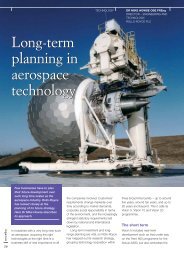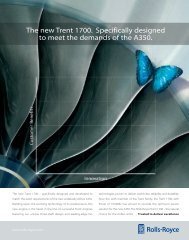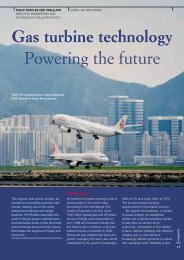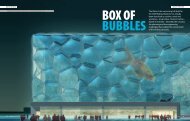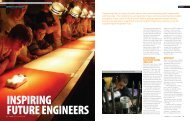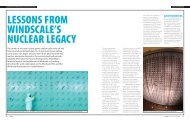Shipping safety - Ingenia
Shipping safety - Ingenia
Shipping safety - Ingenia
You also want an ePaper? Increase the reach of your titles
YUMPU automatically turns print PDFs into web optimized ePapers that Google loves.
MARINE MATTERS<br />
relation to ship hull bending and ship<br />
capsize. These therefore become<br />
priority topics for the first phase of<br />
survival design.<br />
ingenia<br />
20<br />
Figure 5: Fredrico Garcia Lorca a 38 knot monohull ro–pax foil assisted ferry<br />
Photograph loaned by the Naval Architect Journal<br />
Summary<br />
In the eyes of many, the international<br />
shipping industry is in danger of falling<br />
into disrepute with its continuing<br />
malpractices and slow, reactive<br />
responses, including responses to calls<br />
for <strong>safety</strong> related changes and to<br />
related research and development<br />
initiatives. There is also evidence of the<br />
industry’s exploitations, abuses and<br />
other injustices to its seafarers who risk<br />
their lives, often in substandard ships in<br />
appalling conditions. This should be<br />
unacceptable at any time, but ships<br />
carry about 95% of the world’s raw<br />
materials, food and consumer goods,<br />
which underpins the world’s economy.<br />
At the same time, it is quite possible<br />
that shipping freight may double in the<br />
next 12 years or so to meet the<br />
increasing demands from developing<br />
countries, and <strong>safety</strong> is then likely to<br />
worsen.<br />
If these concerns were not enough,<br />
exciting new developments in vessel<br />
type and form, in power plants,<br />
transmissions and in propulsor types<br />
are leading to larger and faster ships.<br />
These two trends of size and speed<br />
inevitably increase the risk of heavy<br />
weather damage, especially to<br />
unrestricted operation ships in open<br />
ocean conditions where the most<br />
damaging abnormally large, steep and<br />
elevated waves occur more often.<br />
It is evident that ships are not<br />
presently designed for sufficiently<br />
extreme rough weather. The Secretary<br />
General of IMO finds this to be<br />
unacceptable. Mariners deserve better,<br />
and we underestimate the power of the<br />
sea at their peril. Putting this right<br />
would more than repay the extra costs<br />
to ship owners and operators.<br />
This article attempts to show how<br />
this may be achieved by establishing a<br />
survival design approach for critical ship<br />
conditions based on improved<br />
metocean data arising from the current<br />
EC MaxWave research and<br />
development programme. Wave impact<br />
design loads for ship fittings and<br />
structure are ‘an order of magnitude<br />
inadequate’, and serious doubts exist in<br />
Closing suggestions<br />
Before Survival Design and MaxWave’s<br />
findings can be implemented, IACS in<br />
particular needs to be convinced of the<br />
need to consider changes to some of<br />
its rules. Much evidence for this is<br />
already available to demonstrate the<br />
need for survival design. With this in<br />
mind, the author and MaxWave leaders<br />
are planning a high level meeting at<br />
IMO around October 2002 at which<br />
they intend to stress the importance of<br />
the MaxWave work and survival design<br />
as a major engineering step towards<br />
establishing a much needed, more<br />
proactive and visionary <strong>safety</strong> culture in<br />
shipping. This would be in everyone’s<br />
interest. ■<br />
Douglas Faulkner has enjoyed two<br />
careers. The first involved designing<br />
and maintaining ships for the Royal<br />
Navy, his most responsible task being<br />
to verify the pressure hull design and<br />
to conduct the deep dive trials of<br />
HMSM Dreadnought, the navy’s first<br />
nuclear submarine. In 1973 he was<br />
appointed to the John Elder Chair of<br />
Naval Architecture at Glasgow where<br />
he pioneered a new and more<br />
efficient approach to the structural<br />
design of large stiffened cylindrical<br />
components of floating offshore<br />
structures. He retired in 1995 and<br />
worked with Lord Donaldson in<br />
resolving the<br />
cause of the<br />
mysterious<br />
loss without<br />
trace of the<br />
huge bulk<br />
carrier MV<br />
Derbyshire.<br />
Among his<br />
many awards and distinctions he has<br />
gained the highest accolades for<br />
naval architects from the USA, USSR<br />
and UK.



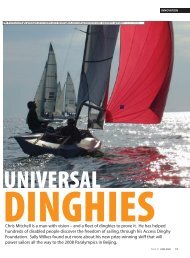


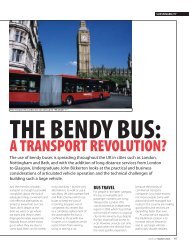
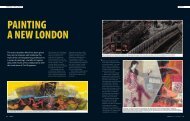
![[322/03] Francke - Ingenia](https://img.yumpu.com/23411337/1/184x260/322-03-francke-ingenia.jpg?quality=85)

